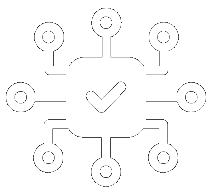The Rhythmic Approach: Aligning Your Weight Loss with Your Body’s Natural Cycles
For too long, the narrative around weight loss has been a one-size-fits-all, ”calories in, calories out” model that often ignores the beautiful complexity of a woman’s body. A woman’s biology is not a static machine; it’s a dynamic, ever-changing system influenced by hormonal cycles, life stages, and individual rhythms. Trying to force a rigid plan onto this system can lead to frustration, burnout, and a feeling that your body is working against you.
The key to a successful and sustainable weight loss for women is to abandon the idea of a linear path and instead embrace a more intuitive, cyclical approach. It’s about listening to your body’s signals, understanding its unique needs at different times, and learning to partner with your biology rather than fighting it.
Understanding Your Cycle’s Influence
A woman’s menstrual cycle is divided into distinct phases, each with its own hormonal landscape that directly impacts metabolism, appetite, and energy levels.
- The Follicular Phase (Day 1 – 14): This phase begins with the first day of your period and lasts until ovulation. During this time, estrogen levels rise, which can increase insulin sensitivity and energy levels. This is an ideal time for high-intensity workouts and can be a period of naturally lower appetite.
- The Luteal Phase (Day 15 – 28): After ovulation, progesterone levels rise. This hormone can increase core body temperature and metabolism slightly, but it often comes with increased cravings, fatigue, and feelings of bloating or irritability (PMS). It’s a time when many women feel hungrier and less motivated to work out.
Ignoring these natural shifts can lead to guilt and a feeling of failure. By recognizing them, you can adjust your strategy and practice self-compassion.
Training with Intention, Not Just Intensity
Instead of pushing through a high-intensity workout when your body is naturally feeling tired, a rhythmic approach allows you to tailor your exercise to your cycle.
- Follicular Phase: This is your time to shine. Your body is primed for high-intensity interval training (HIIT), strength training, and pushing for new personal records. Use this natural energy boost to your advantage.
- Luteal Phase: Be kind to your body. Focus on lower-impact activities like yoga, walking, Pilates, or light strength training. These exercises can help manage PMS symptoms, reduce stress, and keep you moving without overtaxing your system.
Nutrition: Fueling Every Phase
Just as your energy changes, so do your nutritional needs.
- Menstruation (early follicular): Your body is losing iron. Focus on iron-rich foods like leafy greens, lean meats, and lentils.
- Luteal Phase: To combat cravings and mood swings, focus on complex carbohydrates (sweet potatoes, whole grains) and magnesium-rich foods (nuts, dark chocolate) to support your mood and energy.
- Protein is a Constant: Throughout all phases, adequate protein intake is non-negotiable. It helps maintain muscle mass, keeps you full, and provides the building blocks your body needs to function optimally.
A Conversation about Tools: Medication as a Possibility
While aligning your lifestyle with your body’s cycles is a powerful strategy, it’s also important to acknowledge that weight loss for women face biological challenges that go beyond their cycle. In such cases, medication can be a valuable tool to help regulate hormones and appetite. This is a possibility worth discussing with a doctor as part of a comprehensive and individualized plan.
”Your body is not your enemy. It is your partner. By listening to its whispers, you can build a more sustainable, joyful, and effective journey towards a healthier you.”
The Bigger Picture: Beyond the Monthly Cycle
A woman’s life is marked by bigger transitions, too, such as puberty, pregnancy, postpartum recovery, and perimenopause/menopause. Each of these stages brings its own set of hormonal changes that can impact weight and metabolism. The rhythmic approach extends to these phases, encouraging patience, self-compassion, and an understanding that your body’s needs will evolve over time.
By embracing this rhythmic approach, you can move away from rigid rules and towards an intuitive, empowering relationship with your body. It’s a journey that honors your unique biology and celebrates your strength and resilience in every phase of your life.

